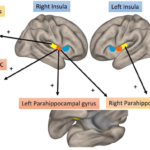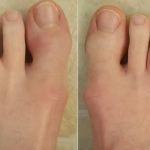Most patients have evidence of disease activity across multiple domains, & it’s the constellation of multi-domain findings that defines a patient’s true disease activity, level of functioning & quality of life.
Individual vs. Composite Measures
On the subject of single vs. composite measures, Dr. Coates said PsA is a disease that can involve manifestations across multiple domains, including arthritis, enthesitis, dactylitis, axial spondyloarthritis, skin and nail disease, and common comorbid conditions, such as inflammatory bowel disease.
Most patients have evidence of disease activity across multiple domains, and it’s the constellation of multi-domain findings that define a patient’s true disease activity, level of functioning and quality of life. Thus, several multi-domain composite scores have been developed to attempt to summarize disease activity across different domains and reflect the overall disease burden of PsA.
Individual and composite measures both have strengths. Individual measures allow for accurate estimation of disease activity in each domain. This approach may influence treatment choices because some medications show greatest efficacy for particular disease manifestations (i.e., peripheral arthritis or skin involvement). Additionally, individual measures may serve as the primary outcome in clinical studies focusing on a single disease domain.
Composite measures allow for the estimation of overall disease activity and may influence treatment decisions based on overall disease burden. They can also provide an efficient primary outcome for studies looking to assess overall efficacy, which can be specifically helpful for trials with small sample sizes.
Binary vs. linear scoring: Outcome measures can also be expressed in either a binary or linear fashion. Binary scores are those in which a patient either does or does not meet the criteria for that score, which is the case for the Minimal Disease Activity (MDA) score. In contrast, a linear score, such as the PsA Disease Activity Score (PASDAS) or Disease Activity in Psoriatic Arthritis (DAPSA), has a spectrum of possible scores that can be used to grade a patient’s disease activity.
For a binary score, it’s somewhat easier for rheumatologists to agree on when a patient meets the definition of low disease activity, Dr. Coates noted. For a linear score, interpretation can be more challenging. Example: Two patients may have the same DAPSA scores and the same swollen and tender joint counts. Yet if one patient has polyarticular disease and has required only one treatment and the other has oligoarticular disease and multiple therapies have failed to control the disease, then the scores may need to be interpreted in the context of each patient’s history.


